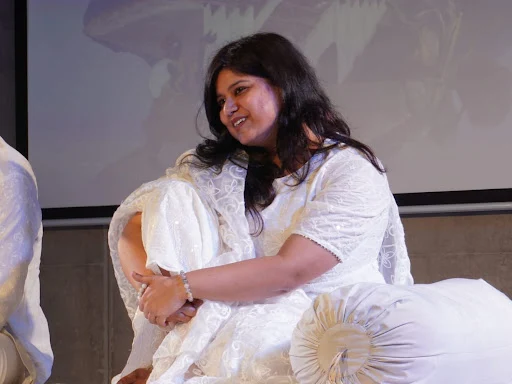News desk: 23 March 2025, Arthshila Delhi hosted a Dastangoi session led by Dastangoi Syed Sahil Agha and his students comprising Shadab Khan, Sahil Sharma, Shubham Singh and Pallavi Shahi. The evening saw a packed-house enjoying multiple dastans of stories enacted by the team and a special Jumlebazi session conducted by Sahil Agha.Dastangoi is a 13th century Urdu oral storytelling art form, became most popular in India during the Mughal period. 'Dastan' meaning story, and 'goi' meaning narration, Dastangoi practitioners engage in oral storytelling through the use of powerful narration to create a vivid imagery in the minds of their listeners. Dastangoi picked influences of persian style in the 16th century which eventually faded out in the 19th century. It is only since 2005, enthusiasts started making efforts to revive this lost art form.The performance opened with storytelling of the famous story 'Mughulo Ne Sultanate Bakshdi' written by Bhagwati Charan Sharma by Shadab Khan and Sahil Sharma who adapted the story in dastangoi style naming it 'Aakhri Dastango - Last Storyteller', followed by Shubham Singh and Pallavi Shahi performing dastan 'Mughal Baccha' written by the famous urdu writer Ismat Chugtai. The second half of the performance highlighted dastan (short stories) on water and the invaluable aspects of water narrated and written by Sahil Agha. In the final act, Sahil Agha performed an exciting session of Jumlebaazi with the audience, an interative and innovative style of creating stories where the audiences got to be a part of the performance.Speaking about the event and the art form, Agha said, “In today’s times, there are very few artists of this folk art. This is an art form that should reach more and more people, especially the future generations. In the 15 years that I have been practicing this art, I have seen very few artists emerge and continue working in this field, and it feels like I will have to take many rebirths to work towards ensuring that this folk art remains alive.” He added, “This art form embodies India’s historical and cultural treasure trove and its Ganga-Jamuni Tehzeeb. Dastangoi can play an important role in addressing misunderstandings between people and bringing them together. Dastans are about love and what unites us and therefore, today, more than ever, it is important that they are told and retold as many times as possible."Adding to it, one of the performers, Pallavi Shahi said, “Art has the immense capacity to help dissolve differences through allowing the space for engagement, dialogue and understanding to be created and sustained. While all art possesses this capability, Dastangoi is especially significant, for here an engaged set of listeners, enamored by complex narratives and imagining a story playing out - solely through the power of the performers’ voices--are suspended in a space where they are much more open to ideas, concepts and thought-processes different from their own. The art form is also special because unlike conventional theatre, here the actors perform without props and movement on stage. These limitations are seen as creative challenges which leads to a much more enriching and engaging experience.”
The audience was mesmerized by each performance and Sahil Agha with his students received echoing applause for their impeccable entertaining performances. Shadab Khan shares " As a theatre artist, Dastangoi is a new style I have explored and I am grateful to Sahil Agha for his generous mentorship and encouragement and made us part of this event."
Sahil Agha plans to continue working towards the spread of this art form among all age groups, especially the youth and hopes that in the times to come this art form which emphasizes the emotional impact of storytelling with the aim of evoking strong reactions from listeners, becomes a bigger part of our shared culture and artistic tradition of the current times.










.jpg)



0 Comments